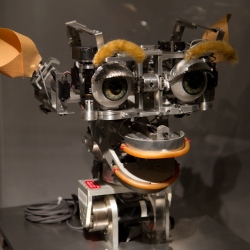
If you’ve been waiting for the day when robot doctors will cut you open, monitor you recovery, and keep you company in your hospital room, you won’t have to wait much longer.
“We’re in the first inning of a nine-inning exercise. The average patient walks in a hospital and is not touched by robotics. That’s going to change in 10 years,” said John Simon, a partner at Boston-based investment firm Sigma Prime Ventures.
That adoption rate, Simon argues, is based on cost: As the price of robotics adoption decreases, hospitals may be more likely to invest in new technology. At their core, robots aren’t all that different from any other hospital gear.
The problem for hospitals, however, is that there’s a danger in pursuing robotics too far. “With medical robots, if you automate something too much, people won’t accept it,” Simon said.
This results in a fine line that hospitals and doctors must manage. While some automation and robotics is good, the last thing a hospital wants to do is embrace robots to such an extent that they alienate patients.
Little of that, however, is on the minds of hospitals today. Right now, most of them are just trying to figure out how to get robots in the front door. Here are a few ways robots are changing hospitals today.
